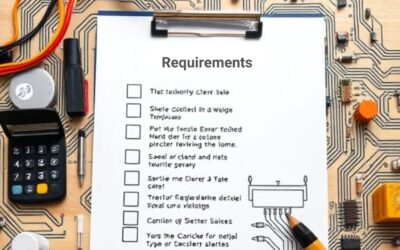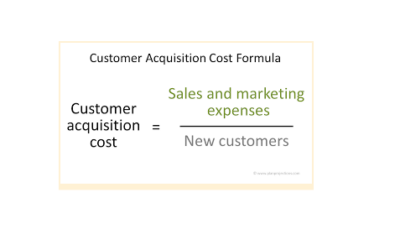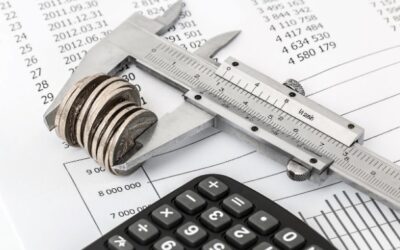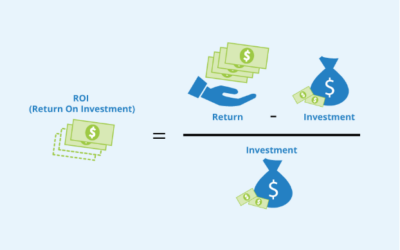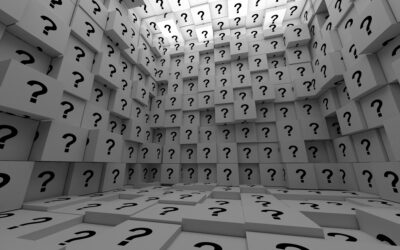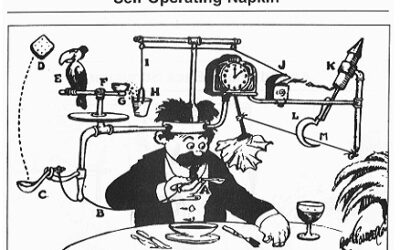Without a good written Requirements Document (RD), do you really know where you are going? Are you certain your team is all on the same page, or do they each have a different picture in their minds on exactly what the new product will be? A clear written RD which is discussed and debated can go a long way to achieving a common understanding of the goal.
Startups
Requirements Document Template
Without a good written Requirements Document (RD), do you really know where you are going? Are you certain your team is all on the same page, or do they each have a different picture in their minds on exactly what the new product will be? A clear written RD which is discussed and debated can go a long way to achieving a common understanding of the goal.
Drawing Tree Template
The purpose of the detailed design phase of product development is to produce a set of drawings that, if followed, will produce a product that meets the requirements. Before starting on the drawings, it is a good idea to first define them and how they connect with each other. A drawing tree is the perfect tool for doing this defining work.
CAC Calculator
In the early stages of product development, there is an idea and some market validation. It will cost money to take the idea any further. How do you know this money is a good investment? Is there any way to de-risk this investment?
Product Development Cost Calculator
In the early stages of product development, there is an idea and some market validation. It will cost money to take the idea any further. How do you know this money is a good investment? Is there any way to de-risk this investment?
You are Designing a Product No One Will Buy
The technology explosion of the early 80s created a plethora of niche market technology businesses. These businesses grew up in a world where a couple of engineers could create a new product category by applying enabling technologies that were rapidly decreasing in cost, size, and power. Many of these new products created niche markets that, although quite profitable, never achieved a significant scale. These businesses typically have very long product cycles as investments in product improvements must be calibrated against the ROI of the development cost.
When compared to larger companies, small technology businesses in niche markets have unique challenges when it comes to developing products. When compared to larger mainstream businesses, small companies have longer product life cycles, limited budgets for developing products, and small development teams (or none at all).
This white paper examines the unique challenges that small companies face in developing technology products and outlines some strategies that can be deployed to remediate these issues. We have 15 years of experience to support our findings and the expertise to help you succeed.
Product Development ROI Calculator
It's not uncommon for product development teams to think that the goal is...
How to Hire a Product Development Team
If you’re a startup or small business, at some point you are going to hire a product development team. This seemingly simple task has lead many an entrepreneur to run. There are sharks in the water, well-meaning experts that will do the wrong thing really well, people looking to learn on your nickel, and lots and lots of people who do not understand the difference between large company product development and small business product development. It’s no wonder most projects fail to meet budget or revenue goals. Peer-reviewed studies compiled by the Product Development and Management Association (PDMA) show as many as 49 percent of product development projects fail, and there is anecdotal evidence to suggest it is much higher in small companies and startups.
How to Design a Go To Market Strategy for Your Startup
Designing the GTM strategy for your startup is just as important as designing the product. Additionally, the GTM strategy may mean the product requirements will need to change. Designing a GTM plan is a simple process, but it does require a lot of work. Many startups fail because they discount the importance of the GTM plan, or they put off the development of the GTM until it is too late. If you’re a startup that is not spending significant resources (time and money) on the GTM development, you may want to consider re-allocating these resources.
Four Golden Rules of Startup Success
There is a lot of advice out there on how to be successful at a startup. Most of it is wrong; or at least may not work for your startup. Most startup advice is anecdotal; that is, it is a result of someone’s experience on what they believe worked for them.
How to Raise Money for Your Startup
Don’t Believe the MYTHS! Some of the myths about raising money are all too familiar. “I just need to be introduced to the right person.” “I will put my idea on one of those crowdfunding platforms.” “Once my prototype is done, everyone will want to fund me.” Or, my favorite, “We will bootstrap with [students/interns/work for stock] people.”
Raising money for your startup is not the result of some elusive magical incarnation. It’s a step-by-step methodical process, just like any other business activity. Raising money is not complex, but it is a lot of work. Maybe that is why so many people cling to the myths.
If you’re up for hard work, request our white paper. If you’re looking for the winning lottery numbers, you can stop reading now.
How to Create a Better Product Development Budget
Product development projects are notorious for going over budget. Often way over budget. This is particularly true in small companies. The opportunity to develop products is generally less frequent in a small business.
Sometimes years can go by before another new product is developed and the team that developed that last product may no longer be with the company. Small businesses just do not get the experience necessary to be good at a task that is hard, even for those who do it every day.
Worse, small companies are more sensitive to product development budget. They do not have the ability to sell a large quantity of units to offset unbudgeted tasks. If the budget is wrong, the project may never produce a positive return on investment and could be shut down after wasting significant funds.
Understanding the dynamics that can cause a product development budget to go awry is key to improving the budgeting process.
The 3 Phases of a Tech Startup
Most tech startups go through three phases: 3Fs, Seed and VC/Scale. Understanding these stages, and the objectives for each, is an important factor in strategy development and decision making. Not understanding the stage you’re currently in is one of the most common reason tech startups fail to move forward, or worse, fail.
The 3 Rules of Product Development Success
In their book “The Three Rules”, Raynor and Ahmed attempt to find rules for business that are always true – regardless of industry, type of company, the economy, etc. They found three: Rule #1: Better before Cheaper Rule #2: Revenue before Cost Rule #3: There are no other rules. “Better before Cheaper” means that if you are faced with a choice between making your product better, or making it cheaper, always choose better. Apple did not focus on finding ways to design and manufacture for less cost, they were focused like a laser beam on how to design and manufacture a great product.
Three common product development mistakes — and how to avoid them
There is plenty of advice out there about how to succeed at product development. This advice is often based on studying successful product development and trying to identify the behaviors and techniques that led to this success. Although this type of advice is necessary, it is not sufficient. In order to be successful, you must also avoid those behaviors that lead to failure. In order to know what causes failure, you must study failure, not just success.
The importance of teamwork and culture in product development
Why do some products succeed and others not so much? Seemly identical product ideas can have widely varying levels of success. Take the iPod and Rio. Both played digital music, and their technical specification was very similar. The Rio actually beat the iPod to market by several years (1998 vs. 2001). Keep in mind, during the development of the iPod; Apple stock was hovering around a dollar a share; it’s now more than $180. Meanwhile, Rio was a profitable, growing company. Why is one product still famously successful and other seemly identical product lost to the pages of history?
How Company Culture Affects Product Development
CMs (Contract Manufacturers) are amazing—they can do ten thousand things and not make a single mistake. Their business must work this way to stay competitive.
Product development, on the other hand, is different. In product development, you are lucky if you do ten things and get one right. For example, I just spent many hours researching a dozen Bluetooth ICs, and only one was chosen to be included in the product. I got one right out of twelve attempts.
The Importance of Conceptual Design in Product Development
Why are successful people successful, while others are not? Successful people do what unsuccessful people are not willing to do.
Let’s take Steve Jobs who took over Apple on the verge of bankruptcy and made it the most valuable company in the world. Did he take short cuts? Did he look for easy answers? Did he hire people because they were cheap? No, he knew there were no shortcuts to victory, only hard work. He knew this was especially true when it came to conceptual design. He endlessly obsessed over every detail of every product even to point of proclaiming “A lot of times, people don’t know what they want until you show it to them”
4 Reasons Startups Fail And How To Avoid Them
Startups are hard – much harder than running an existing business. There is no existing market to instruct strategy. There is very little capital. There is very little time for the team to find its way to being functional. There is no product, processes or history to guide decisions.
Many startups fail, but some, despite all the impediments, succeed. Why do some succeed and others fail? Our research has shown the answer is simple: successful startups are willing to do what the unsuccessful ones are not – namely, follow the four golden rules.
The Four Rules for Startup Success
Is all startup advice equal? Are there “rules” that always work? Startups come in all shapes and sizes: mom and pop, technology, bootstrap, franchise, etc. and they compete in many different industries.
Is there a set of tenants an entrepreneur can use to guide them on their journey that is always true regardless?
We set out to answer precisely this question. Our work with hundreds of startups led us to an interesting conclusion: some rules work in some situations and four of them always work. Read more:
How Startups Can Keep Product Development Lean
The lean start-up movement has been based on a single insight – which the purpose of a start-up is to discover a business model that works. Instead of the “entrepreneur that knows what the market wants”, we move to the “entrepreneur that knows how to discover what the market wants”. This subtle difference has been key to the success of companies like Groupon, Dropbox and Intuit to name a few.
In this article we explore the unique challenges of a lean start-up and how Outsourced Product Development (OPD) can be used to overcome them
Keys to Successful Product Development
You want to see your product succeed. You want to see your company succeed. In order for that to happen, you also have to succeed in product development.
The major hurdle most small companies and startups face when it comes to product development? Limited resources, both in funding and expertise.
Understanding the phases of product development and effectively managing the process from day one are the keys to your success. Knowledge, expertise, and good decision making will help ensure that you, your product, and your company succeed, and at the same time reduce your costs and risk.
This white paper focuses on successful product development for small companies and startups. We have 15 years of experience to support our findings and the expertise to help you succeed.
Detailed Design – Secrets to Great Detailed Design
The Detailed Design Phase is the product development stage in which the abstract ideas defined by the Requirements and Conceptual Design are transformed into a tangible, functional product. It is typically the largest and longest phase of any product development program, consuming the most manpower and time. The detailed implementation and integration of diverse technical disciplines require creativity, analytical skills, fabrication, assembly, troubleshooting, debugging, iteration and, most of all, on-going and constructive communication among all of the team members involved. Consequently, it is also the stage in which mistakes and overruns are most likely to occur. Below are several concepts that we apply at Finish Line PDS to improve product development performance and results during the Detailed Design Phase.
1 – Start ‘Right’ at the Beginning
If you do not already have well documented and approved product requirements that clearly articulate what you want to develop, you are not ready to start detailed design! It is that simple. We all know the story of the Blind Men and the Elephant in which several blind men describe their personal knowledge of an elephant after having exposure to only one of its body parts, e.g., its trunk, tusk, leg, tail, etc. Upon discussing the elephant, they quickly realize that they all have a radically and irreconcilably different understanding of the same animal. Now, imagine that the blind men are your engineers and designers and that the elephant is your new product concept. What do you think you will get from your team without discussing and clearly articulating and documenting your product prior to starting its design? It is very unlikely to be the product you desire and, whatever it is, it will definitely not be delivered in the most timely and efficient manner.
2 – Don’t Reinvent the Wheel. In Fact, Don’t Invent Anything You Don’t Have To!
Product development is hard! You are creating something unique. Whether it is pioneering a new product category, a radical spin on an existing product or a mid-life kicker for an aging one, it always includes something new and different. However, differentiating whether ‘new and different’ can be achieved through engineering or actually requires a major invention is a critical part of successful product development. Engineering can usually be planned and scheduled. Yes, it may take a few iterations to perfect but these can be anticipated and accommodated in the development plan. The invention, on the other hand, is nearly impossible to predict. It may take weeks, months or years. What’s worse, the goals for the desired invention might never be attained. Mistaking invention for engineering and anticipating its orderly and scheduled progress along a critical path is destined to undermine any project. Thoroughly evaluate each aspect of your new product. If anything requires an invention, don’t schedule and conduct it during Detailed Design. Establish a separate, focused sub-project whose only mission is to develop the invention. Once you are confident that the invention can be reduced to engineering, you can marshal your development team for the Detailed Design Phase. Otherwise, establish a proven contingency that can substitute for the new invention during product introduction and the first market cycle.
Another approach to timely and efficient product development is to actually conduct as little new design and development as possible. Leverage existing concepts, designs, components, modules, etc. and save your precious development resources for those elements of the design that differentiate your product and add unique value for your customers. They care more about the uniqueness and value your product offers than about the ancillary and generic aspects of the product that can be leveraged from other sources.
3- Step One – Make a Drawing Tree
Step one is NOT generating a Gantt chart, it is a developing drawing tree. A drawing tree is a diagram that includes all of the critical assemblies and subassemblies and their hierarchical relationship to one another. Until you can identify and define all of the assemblies that make up the product you cannot plan how those assemblies will be developed. Generating the drawing tree:
Allows everyone on the team to understand WHAT drawings/subassemblies need to be completed.
Allows everyone on the team to understand HOW drawings/subassemblies connect to other assemblies.
Allows manufacturing insight into how the product will be manufactured.
Allows assignment to be made to individual engineers with clearly defined “done” points: drawing done, prototype built, DVT done. A drawing tree shows a product-centric plan as compared and contrasted with a time-centric Gantt chart.
Defines “done” (at least for the detailed design phase). When all the drawings have been signed off in terms of drawing, prototype built and DVT done.
4- Keep It Simple
There are numerous quotes extolling the virtues of simplicity and perhaps none of them captures the essence of the concept better than one from Albert Einstein “Everything should be made as simple as possible, but not simpler”. This maxim is applicable to product development and especially to Detailed Design. Designs should be made as simple as possible. Simple designs are easier to communicate, implement, test, document, and support. About the only thing that may not be easier is creating them. However, the time spent simplifying designs during the Detailed Design Phase is always justified. Avoid the tendency to accept the first design presented and test every design concept by asking, “Is this as simple as possible?”
Simplicity also applies to the prototype and test stages of the Detailed Design Phase. There is a tendency to wait for the entire new system including the hardware, software, mechanism, etc. to come together before testing starts. However, it is usually much more effective to prototype and test at the lowest subassembly level possible. This eliminates the delays associated with waiting for ‘everything’. It permits you to focus on the risk areas much earlier in the development process, providing more time for iterations and changes.
5- Actively Manage Change
Change is an inevitable part of product development. As the development process proceeds, new product improvement opportunities or limitations may be identified, the market or competitive landscape may change and revelations may emerge. It is essential that all of the changes be actively managed. Just because product improvement opportunities are possible does not mean that they should automatically be incorporated into the new design. If an impediment is encountered, it does not automatically mean that a requirement can’t be satisfied. Each change should be consciously considered, discussed, documented and acted upon. This provides the opportunity for genuine improvement and consciously accommodating or rejecting its associated costs or consequences. It also provides a control mechanism to manage and prevent scope creep. The Requirements Document must always be maintained in a current state and changes must be immediately shared with the entire team.
6- Design Documentation – It Isn’t a Byproduct, It’s the Deliverable!
In the excitement of new product development, it is easy to lose sight of the primary objective. While the attention may be focused on your great new product, the real objective is to create and comprehensively document a design that permits the efficient manufacture of your great new product. This broader definition must permeate the entire Detailed Design Process and not be left as an afterthought. Design Documentation should be generated and maintained throughout the design process and should be an integral part of every design review. All specifications, drawings, code, BOMs and test plans should be independently reviewed, approved and maintained under revision control in a secure environment.
Invention versus Engineering
Have you ever wondered why some product development projects run like clockwork and others are train wrecks? One reason some projects succeed while others do not is the failure to differentiate between what new aspects of the project will require invention as opposed to engineering. Engineering is, for the most part, predictable and lends itself to planning and scheduling. An invention, not so much. Failure to identify inventions necessary to a product’s success and to conduct that invention off the critical path is responsible for most of the train wrecks.
Upon initial consideration, the difference between the two definitions doesn’t appear all that significant. The objective of both invention and engineering is the creation of development of a device, method or process. Consequently, in the broad realm of new product development, it is very easy to lose sight of the fact that invention and engineering are not the same.
Finish Line has developed hundreds of new products, some requiring invention and many only requiring engineering. This white paper explains how to successfully differentiate between the two. We have 15 years of experience to support our findings and the expertise to help you succeed.
What Every Contract Manufacturer Needs to Know About Product Development
In the landmark HBR article The Four Things a Service Business Must Get Right, by Frances X. Frei, the author contrasts a product business from a service business. The author opines that in a service business, unlike products businesses, the customer is a key part of the product realization processes. His research leads him to the conclusion that truly great service companies recognize this difference and create strategies that focus on “managing the customer”.
Conceptual Designs Comparison Tool
Few would disagree that the iPod saved Apple from bankruptcy, but it was not just about the idea of a digital music player. There were at least 20 other digital music players on the market long before Apple started the project. Apple understood at a profound level that the requirement of “easy-loading songs” was essential, and they developed the concept of iTunes as a result of that understanding. We all know the results. Imagine if they had said, “We don’t need to worry about conceptual design. We know what we need already — we need to focus on getting it to work.” If the mission was singularly focused on getting a prototype to “work”, then Apple and the iPod would both be on the waste heap of yet another failed startup/product just like all the other digital music players/startups on the market at that time. Apple’s Conceptual Design for the iPod is mainly responsible for saving what would eventually become the most valuable company in the world.


